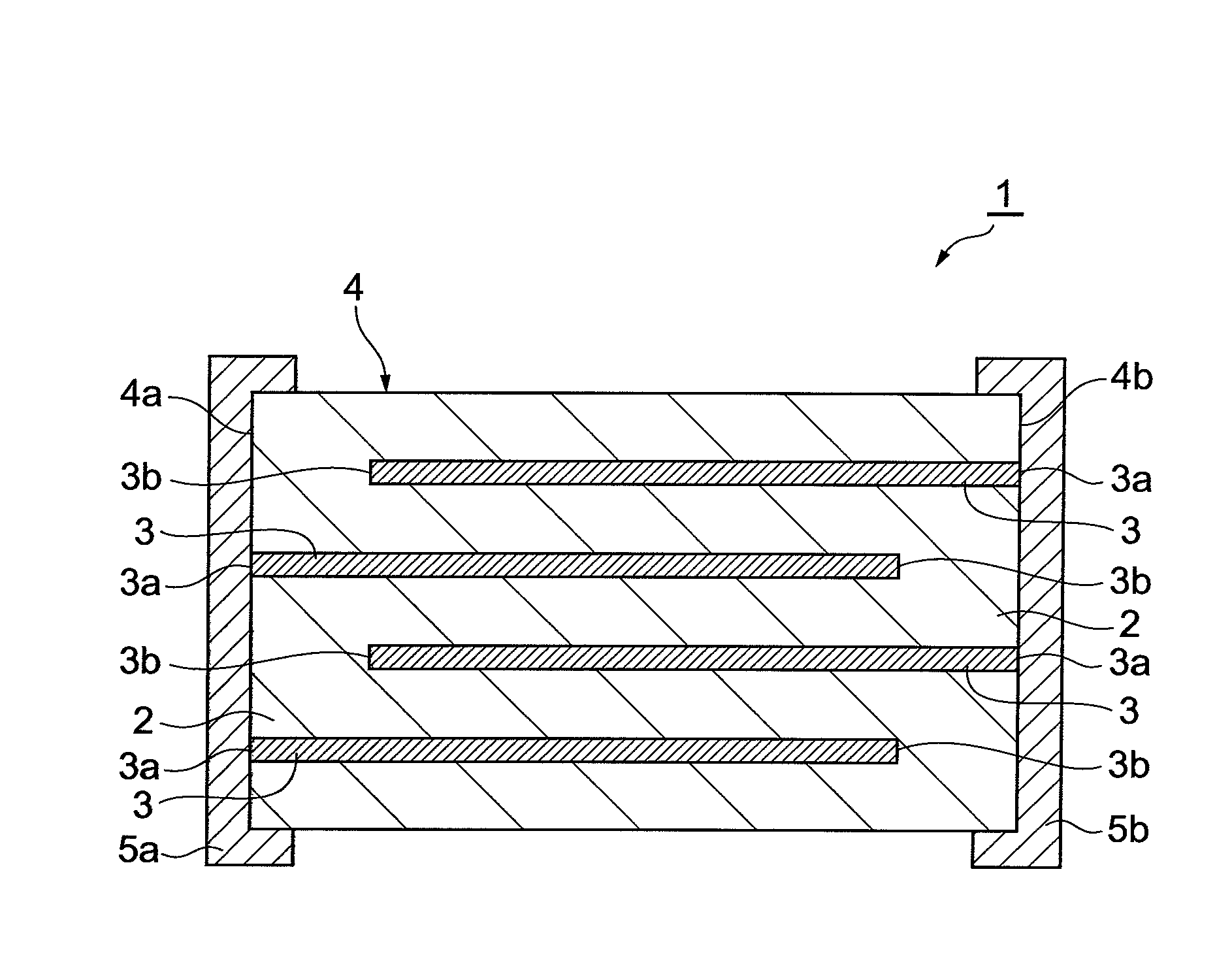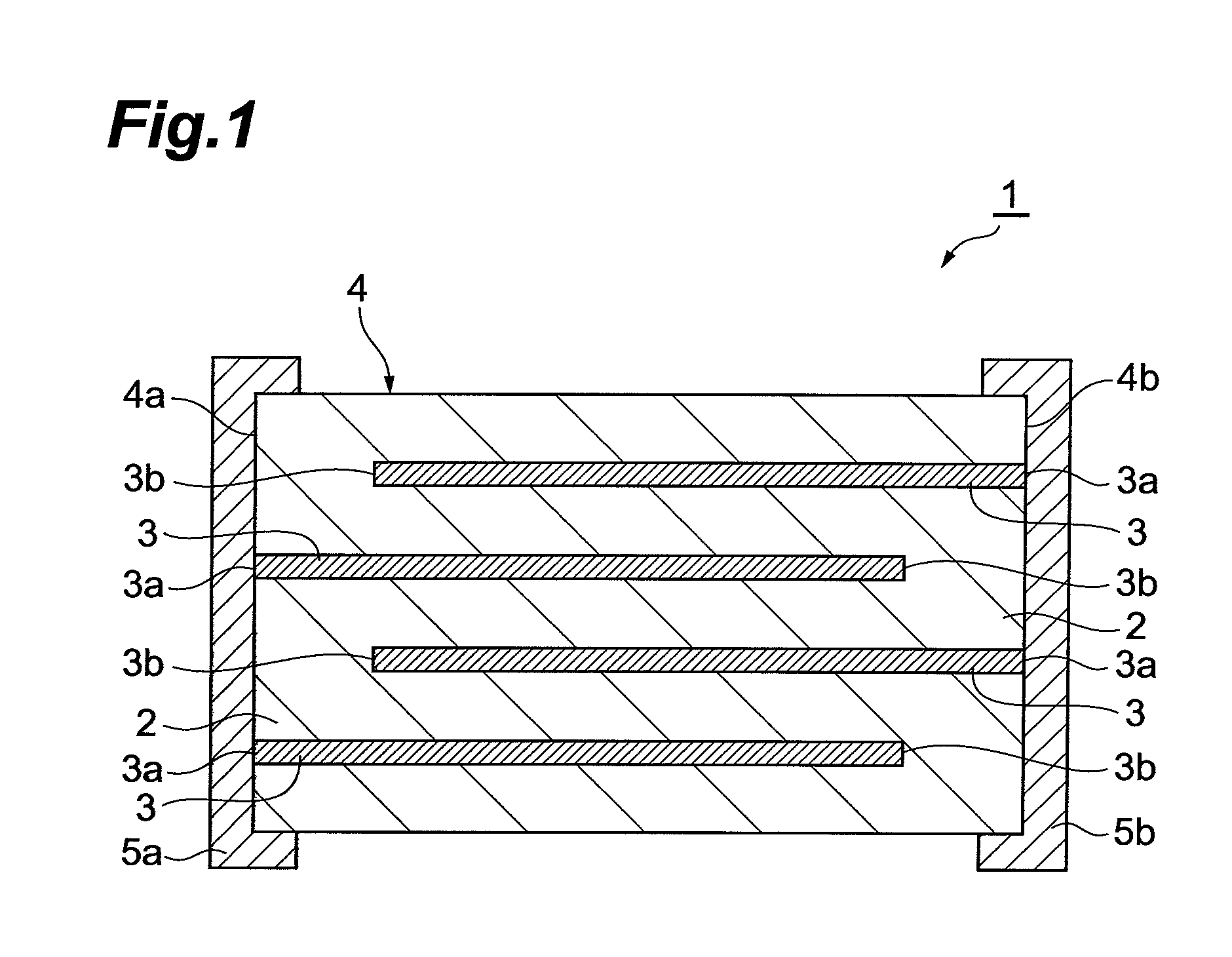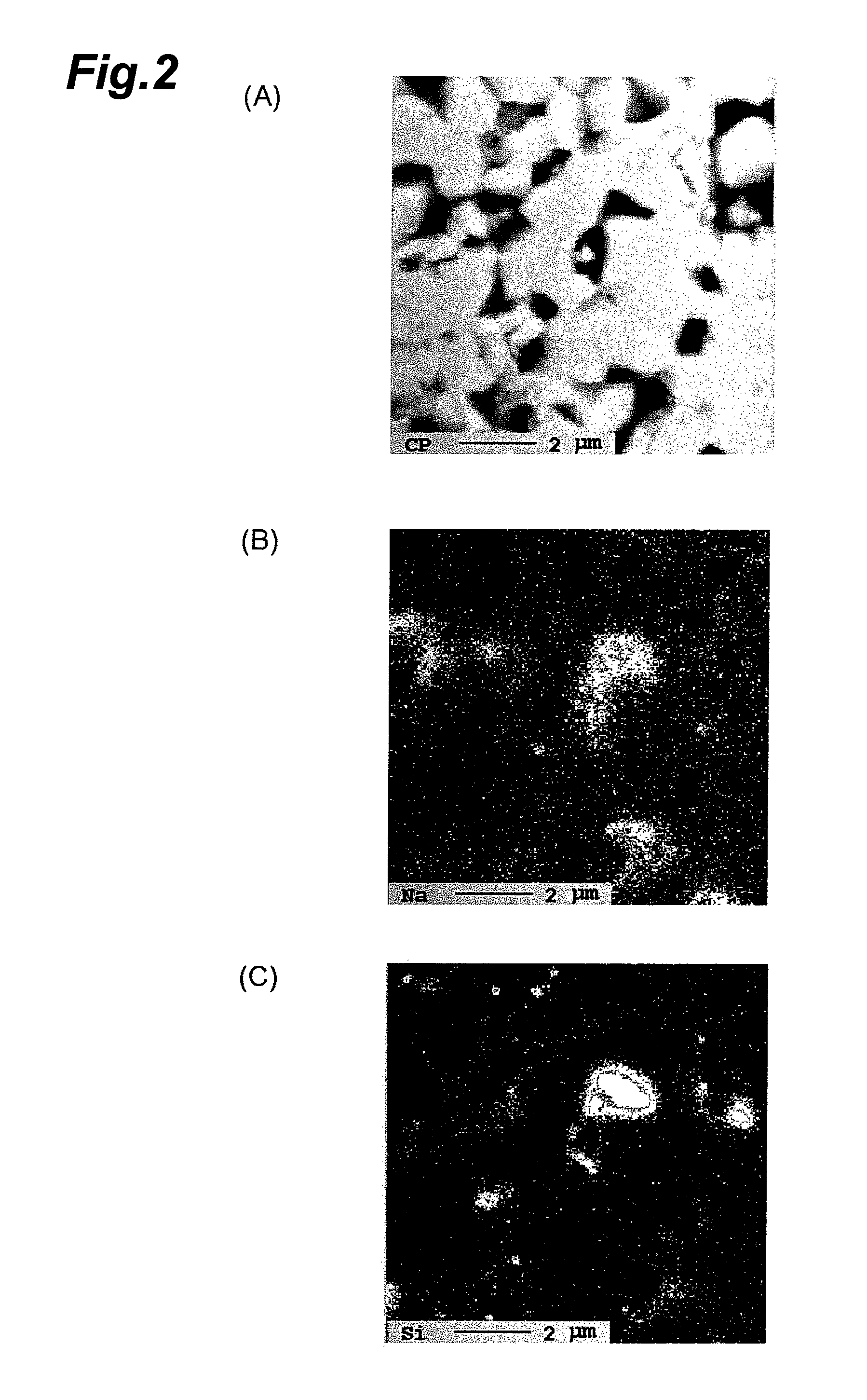Stacked PTC thermistor and process for its production
a ptc thermistor and stacked technology, applied in the direction of positive temperature coefficient thermistors, basic electric elements, electric apparatus, etc., can solve the problem of insufficient jump characteristic, and achieve the effect of excellent jump characteristic, selective preference distribution of alkali metal elements, and easy segregation
- Summary
- Abstract
- Description
- Claims
- Application Information
AI Technical Summary
Benefits of technology
Problems solved by technology
Method used
Image
Examples
example 1
Fabrication of Stacked PTC Thermistor
[0074]First, as starting powders for formation of the semiconductor ceramic layer there were prepared powders of BaCO3, TiO2, Gd2O3, SiO2 and Mn(NO3)2.6H2O. The starting powders were weighed out in amounts for a barium titanate-based compound composition according to formula (6) above. The weighed amounts of each of the starting powders were placed in a nylon pot together with purified water and a pulverizing ball and mixed for 6 hours and dried to obtain a mixed powder.
[0075]After subsequent pre-molding of the mixed powder, it was held for 4 hours in air at 1150° C. and calcined to obtain a calcined body. The calcined body was shredded to form a calcined powder with a mean particle size of 1 μm. Next, the calcined powder was placed in a nylon pot together with purified water and a pulverizing ball, and prescribed amounts of a solvent, binder and plasticizer were added and mixed therewith for about 20 hours using a triple roll to obtain a green s...
examples 2-10
[0082]Stacked PTC thermistors for Examples 2-10 were fabricated by the same method as Example 1, except that the alkali metal salts shown in Table 1 were used as alkali metal salts instead of Li2O.
example 11
Fabrication of Stacked PTC Thermistors
[0101]After weighing out BaCO3, TiO2, Gd2O3 and Nb2O5 as starting powders in amounts so that the barium titanate-based compound had the composition shown in the following formula (11), they were placed in a nylon pot together with purified water and a pulverizing ball, mixed for 6 hours and then dried to obtain a mixed powder.
(Ba0.9985Gd0.0015)0.995(Ti0.9985Nb0.0015)O3 (11)
[0102]A porous sintered compact was prepared in the same manner as Example 1, except for using this mixed powder. The prepared sintered compact was then impregnated with an aqueous solution containing an alkali metal salt, to adhere the alkali metal salt to the sintered compact. The alkali metal salt used was NaNO3 with a molecular weight of 84.995. The alkali metal (Na) concentration in the aqueous solution of the alkali metal salt (NaNO3) was 0.08 mol % as alkali metal element (Na element).
[0103]After coating the edge faces 4a, 4b of the body 4 with Ag—Pd paste, it was bake...
PUM
| Property | Measurement | Unit |
|---|---|---|
| temperature | aaaaa | aaaaa |
| thickness | aaaaa | aaaaa |
| dew point | aaaaa | aaaaa |
Abstract
Description
Claims
Application Information
 Login to View More
Login to View More - R&D
- Intellectual Property
- Life Sciences
- Materials
- Tech Scout
- Unparalleled Data Quality
- Higher Quality Content
- 60% Fewer Hallucinations
Browse by: Latest US Patents, China's latest patents, Technical Efficacy Thesaurus, Application Domain, Technology Topic, Popular Technical Reports.
© 2025 PatSnap. All rights reserved.Legal|Privacy policy|Modern Slavery Act Transparency Statement|Sitemap|About US| Contact US: help@patsnap.com



